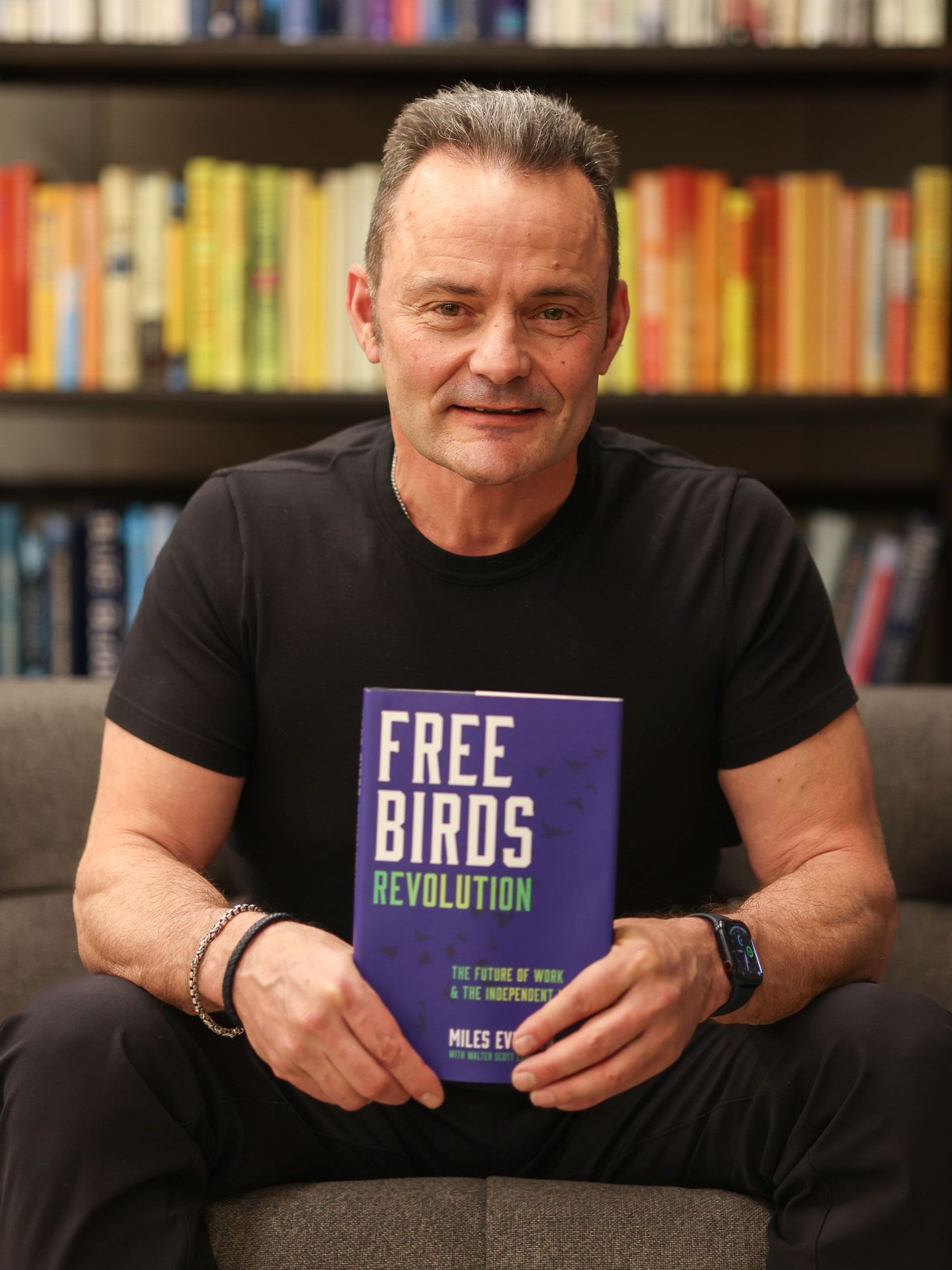After years of neglect, this industry is finally fixing a '70s-era mistake in the U.S.!
| From the desk of Miles Everson: Happy Wednesday! I hope you’re all having a great midweek. For today’s “The Independent Investor,” I’m excited to share with you another industry that you should watch out for. This is something you might want to consider investing in in the future. Are you ready? Read on below to know how this particular industry is fixing a ‘70s-era mistake. |
|
After years of neglect, this industry is finally fixing a '70s-era mistake in the U.S.! Are you familiar with Jackie Medcalf? For those of you who don’t know yet, she was Miss Houston Rodeo in 2013. As someone who's been exposed to such a career path since she was a child, it’s no surprise that it’s easy for her to stand out in her modeling gigs. Medcalf’s modeling career took off when she won Miss Darque Tan in 2009. From there, she used the flexibility and income from her modeling to put herself through college at the University of Houston - Clear Lake. … but did you know that early on in her life, Medcalf had no idea that her body was becoming “toxic soup”? It started when her family moved to a town right on the San Jacinto River when she was a teenager. They just wanted to experience the slow pace of river life near Houston, Texas. Unfortunately, the place they once thought would be their haven turned out to be a host of health scares. Medcalf’s mother was the first to notice something was wrong. Their cats started developing tumors… Their chickens stopped laying eggs and their feathers fell off… Every couple months, family members would come down with flu-like symptoms… Medcalf herself developed gastrointestinal issues and chronic joint pain. So, she gave up plans to become a competitive hurdler in college and moved to San Diego to pursue modeling. She and her family kept getting sick. By 2011, Medcalf’s symptoms had progressed to near-daily seizures, skin lesions, and weight loss. She weighed just 90 pounds and intermittently lost the use of her hands. Doctors had no idea what was wrong; neither did Medcalf. Then she decided to test her family’s well water… As an Environmental Geology student at the University of Houston - Clear Lake, one of Medcalf’s classes required her to do a real-world case study. Thanks to that requirement, she ended up getting some unexpected answers to her medical problems.
Medcalf found out that when her family bought their property in 2003, the well water there was described as “pristine.” Medcalf expected it to be far superior to the water in Houston, which had recently been flagged for high levels of radiation. She was wrong. Instead, the well water was riddled with heavy metals—at such a high concentration that one could actually see metal particles floating in the samples! Because of that, her professor urged her to get tested for exposure. True enough, Medcalf’s blood came back positive for 19 of 21 heavy metals. Uh-oh… Soon after, Medcalf learned that her family home was surrounded by four “Superfund” sites—areas of contamination that nobody would take responsibility for. Through the Superfund designation, the U.S. Environmental Protection Agency (EPA) directs money for cleanup efforts. Only, one of the four locations around the Medcalf house hadn’t been remediated properly. None of the companies responsible for dumping the toxic waste had come up with a suitable plan. According to Medcalf, the EPA was far too lax with them. Medcalf’s family changed their water source and eventually moved, but it was too late as her stepfather had already been diagnosed with cancer, likely from exposure to the contaminated water. In the end, they lost USD 350,000 on their former dream home. By 2013, Medcalf was back to modeling and won the title of Miss Houston Rodeo that year. All the while, she was determined to advocate for her fellow Texans. When she saw how little information the Houston community had about its drinking water, Medcalf launched the Texas Health and Environment Alliance (THEA) in 2015. Advocacy groups like hers are pushing for community education and more accountability, particularly for America’s drinking water. Fixing a ‘70s-Era Mistake According to Professor Joel Litman , Chairman and CEO of Valens Research and Chief Investment Strategist of Altimetry Financial Research, Houston is far from alone with its water issues. Even communities that aren’t at risk of toxic-waste contamination are dealing with old, underdeveloped water systems. Professor Litman states metal pipes have useful lives ranging between 40 to 70 years. PVC plastic pipes, which are the most widely used, only last between 24 and 50 years. Back in 1970, the average age of U.S. water pipes was 25 years old. That’s right about when authorities should have started replacing a large number of them. Sadly, they let the water infrastructure age without proper replacement. In fact, the average pipe in the U.S. reached 45 years old by 2020. That’s why at present, the U.S. is pushing the boundaries of its water infrastructure’s usefulness. According to Professor Litman, the country already has to contend with 300,000 water-main breaks each year… and at the current rate of investment, it will get even worse. In 2019, the American Society of Civil Engineers (ASCE) estimated there was a USD 81 billion per year investment gap in water infrastructure. This could grow to a staggering USD 434 billion gap by 2029. Professor Litman believes the U.S. will need to spend an estimated USD 2.2 trillion to upgrade and replace its water infrastructure over the next 20 years. The government is already taking steps to remedy the situation. In April 2024, the EPA announced its strictest forever-chemical standards to date. It’s intended to protect approximately 100 million U.S. residents from dangerous chemicals like the ones that hurt the Medcalf family. Congress has allocated billions of dollars toward water-infrastructure upgrades via the Bipartisan Infrastructure Law. Under this act, USD 55 billion will go towards expanding access to clean drinking water… … another USD 50 billion is for improving the durability and efficiency of water systems… … and more than USD 125 billion will be spent on repairing roads, bridges, and airports, all of which need improvements to their drainage and fire protection systems. So, how do all of these things relate to investing? You see, years of neglect have created a fantastic opportunity for businesses that handle water infrastructure. Governments and corporations have finally committed to upgrading and building new water systems. As new projects break ground, this industry is sure to take off. … and as per Professor Litman, this is something you should look out for soon when planning to grow your investment portfolio. Hope you’ve found this week’s insights interesting and helpful.
Stay tuned for next Wednesday’s The Independent Investor! After years of languishing in the shadows, deepwater drilling is seeing a resurgence as oil players are focusing on it again. Learn more about how this segment in the oil industry is now seeing meaningful investment after spending years in the shadows in next week’s article! |

Miles Everson
CEO of MBO Partners and former Global Advisory and Consulting CEO at PwC, Everson has worked with many of the world's largest and most prominent organizations, specializing in executive management. He helps companies balance growth, reduce risk, maximize return, and excel in strategic business priorities.
He is a sought-after public speaker and contributor and has been a case study for success from Harvard Business School.
Everson is a Certified Public Accountant, a member of the American Institute of Certified Public Accountants and Minnesota Society of Certified Public Accountants. He graduated from St. Cloud State University with a B.S. in Accounting.
SIGN UP FOR THE NEWSLETTER
The Business Builder Daily
Newsletter Signup
We will get back to you as soon as possible.
Please try again later.



